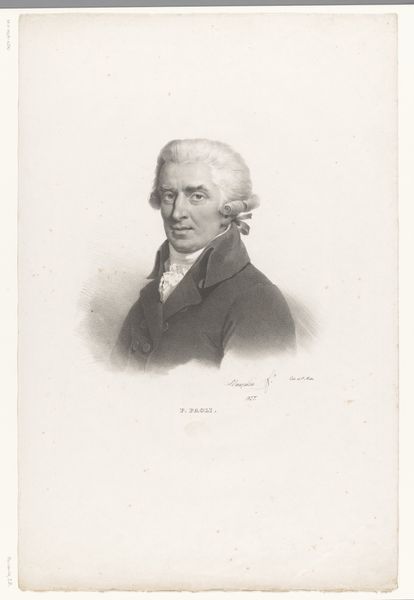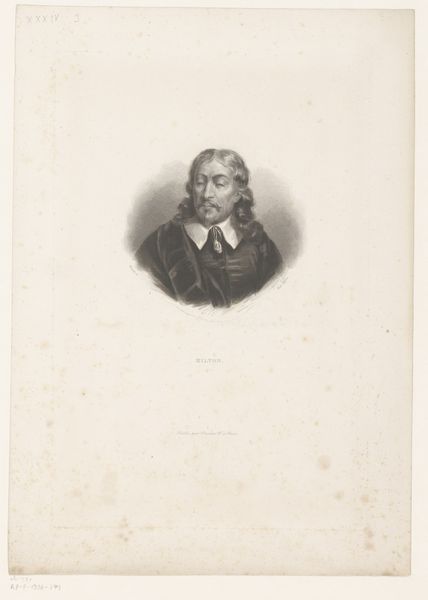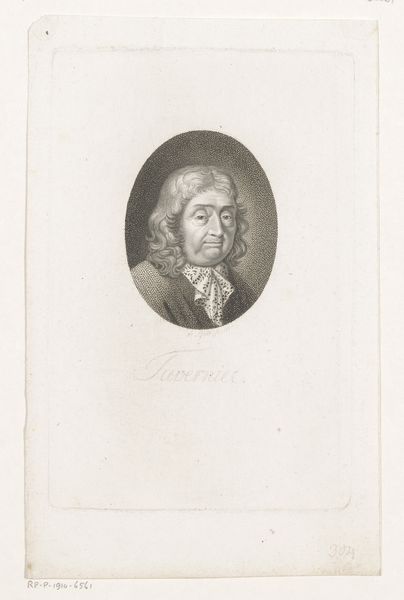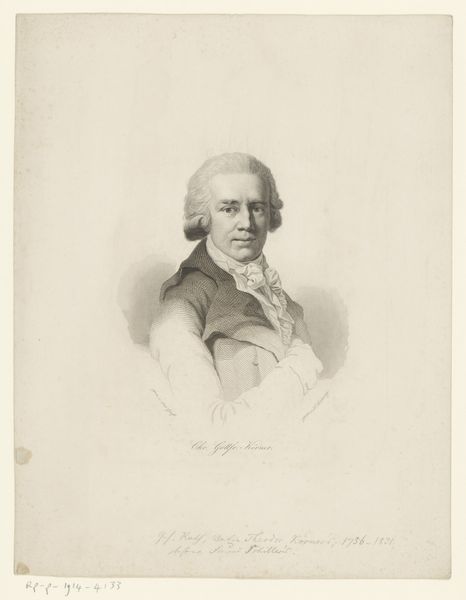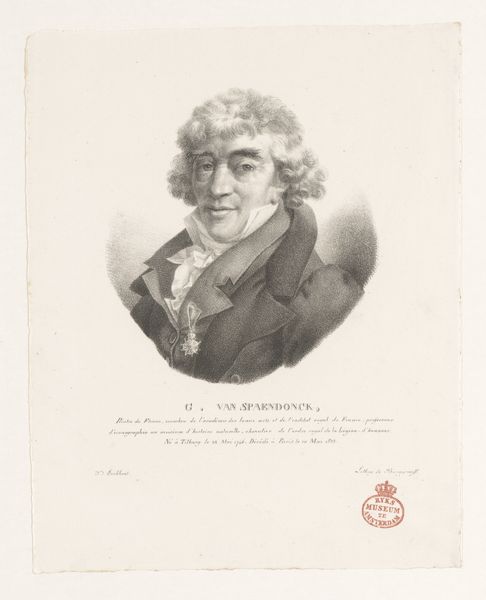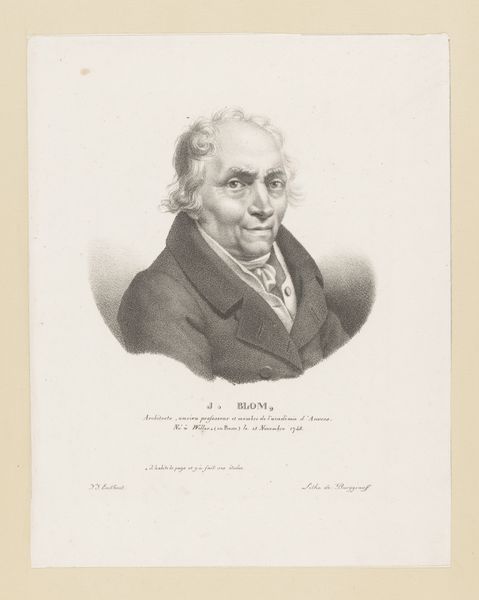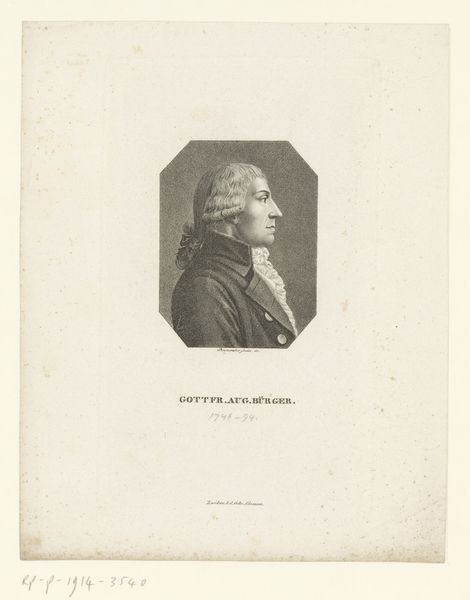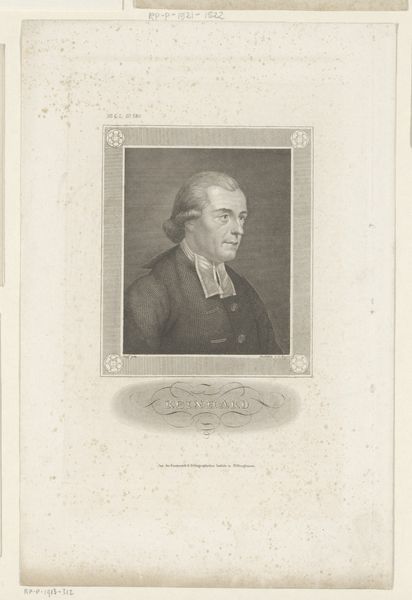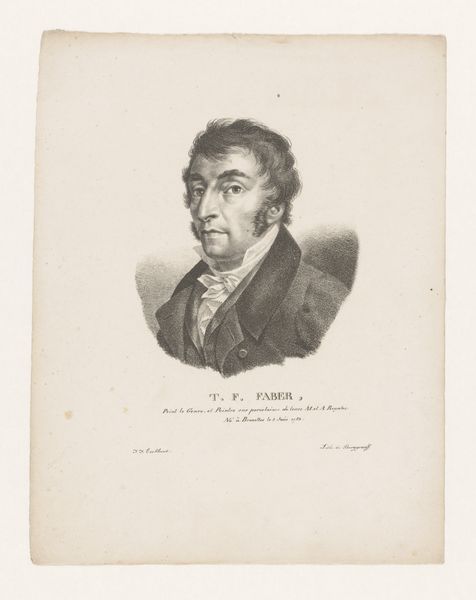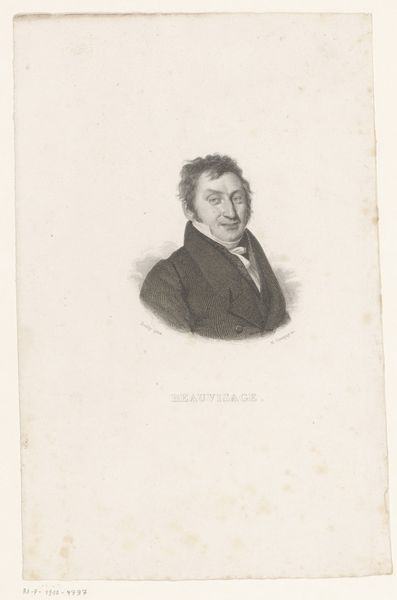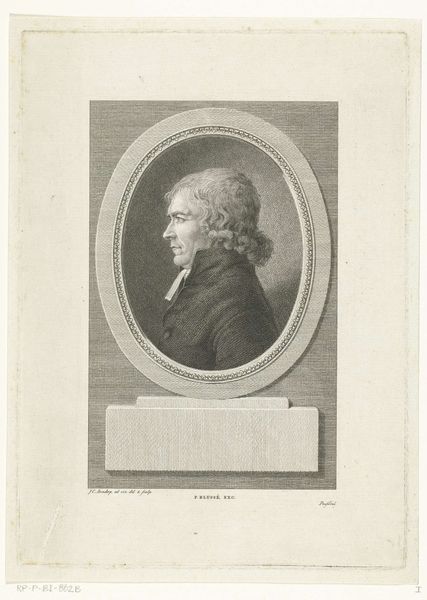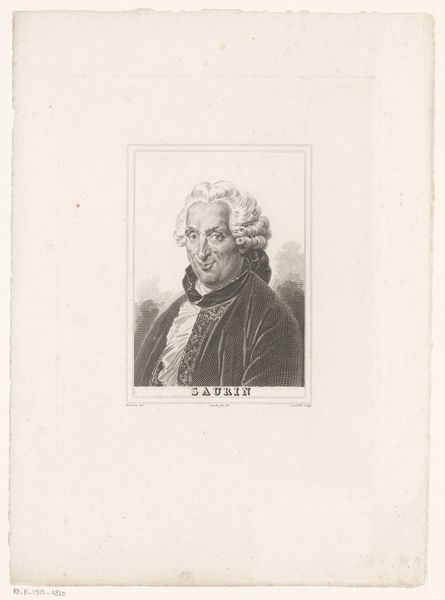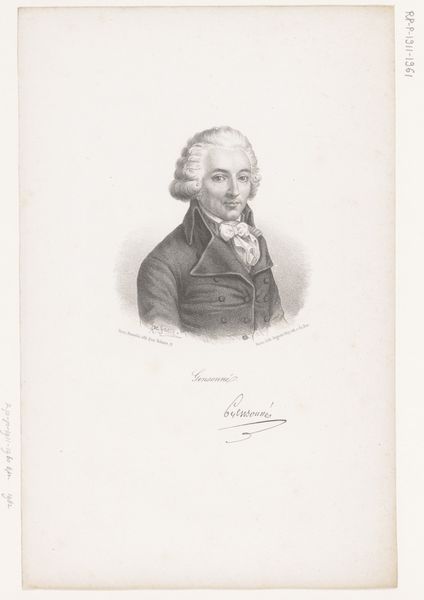
drawing, pencil
#
portrait
#
drawing
#
pencil drawing
#
pencil
#
academic-art
Dimensions: height 499 mm, width 338 mm
Copyright: Rijks Museum: Open Domain
Editor: Here we have "Portrait of Gerard van Spaendonck," a pencil drawing from around 1826-1850 by Nicolas Maurin. It's incredibly detailed, especially the face and hair. What strikes me is how formal and almost stately the subject appears. What can you tell me about this piece? Curator: Well, it's a fascinating example of academic art and portraiture functioning within specific societal frameworks. Consider the sitter, Gerard van Spaendonck. He was a celebrated flower painter. In portraying him this way, Maurin is not simply creating an image, but contributing to the construction of Van Spaendonck's public persona and the status of artists more generally. Editor: So it’s about elevating the role of the artist in society? Curator: Precisely. The inclusion of the medal, his clothing, even his hairstyle – they all contribute to a deliberate image of respectability and achievement. Ask yourself, who was commissioning these portraits? What message were they intended to convey about the sitter's standing and contributions? This kind of imagery reinforces institutional hierarchies and the values of the era. Think of how salons at the time would have exhibited this work; imagine how it may have impacted audiences, not just of fine art but ideas. Editor: That makes a lot of sense. It's like a visual representation of his social capital. I hadn't considered how carefully constructed that image would have been to reinforce his position. Curator: Indeed. The portrait then becomes more than just an individual likeness, but a socio-political statement about art, artists, and their place in the broader culture. It also suggests the intended audience – those who understood the codes and cues of status displayed within the artwork. Editor: Wow, that’s changed how I see it entirely! I will certainly be thinking about the cultural forces shaping what’s presented. Thank you. Curator: My pleasure. It's this understanding of the social and historical contexts that makes art truly resonate.
Comments
No comments
Be the first to comment and join the conversation on the ultimate creative platform.
